Our commitment to equality, diversity & inclusion
At Workday, we believe every employee deserves equitable pay and an equal chance to succeed. We embrace different perspectives, backgrounds and skills to encourage diversity, because it fuels innovation and broadens our connection to the world.


Ensuring pay equity
Through our market-based pay structure and annual pay equity review, we’re confident that our Workmates are paid equitably. During our annual pay parity analyses, we examine base salary, on-target earnings and annual stock refresh grants to pay according to the market value of every job. These reviews consistently reveal no disparities for greater than 99 percent of our workforce.
“Equity is not easy to achieve – it requires acknowledging differences, understanding history and many other considerations. Equity is worth the effort, because everyone should enjoy the chance to contribute and succeed”
Carin Taylor, Chief Diversity Officer, Workday

Understanding the gender pay gap
We recognise that ‘pay gap’ and ‘pay equity’ are very different things. Unlike pay gap calculations, pay equity compares individuals by job roles – comparing equal pay for equal work. The gender pay gap, as defined by the Ireland Government, is the difference in the average hourly wage of all men and women across a workforce regardless of what type of job they hold or level of responsibility.

Continuing the journey
We’re still working towards closing the gender pay gap – and we won’t stop until we get there. The number of women in our global leadership team reflects this.
Every organisation, including Workday, must continue to promote, encourage and develop female talent to drive lasting change in the technology sector.
Organisations need to show their people are salaried, bonused and rewarded in an equitable way, regardless of gender. Pay equity is crucial as we push to close the gender pay gap.
- 2024
- 2023
- 2022
Our Irish gender pay gap results for 2024
The Irish market is important to Workday and has provided heavily desired tech talent to support our product and technology organisation, our primary business segment in Ireland.
These high-tech roles are well paid, but like our competitors in high-tech, are still heavily male dominated. The larger representation of men in our high-tech workforce in Ireland has led to a pay gap (males are paid higher on average). While we’re confident we pay fairly and equitably, we acknowledge we can do more to reach a better-balanced workforce between men and women, especially in higher paid roles.
Below are the Workday results for the required pay gap calculations for Ireland. Please note, Workday has no temporary employees or part-time male employees so we’re unable to report a pay gap within these segments.
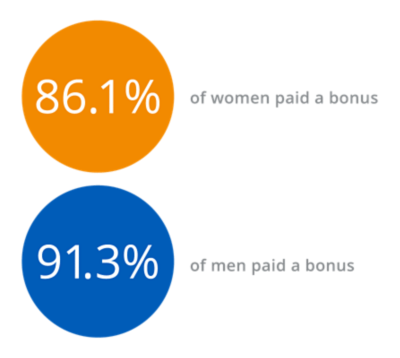
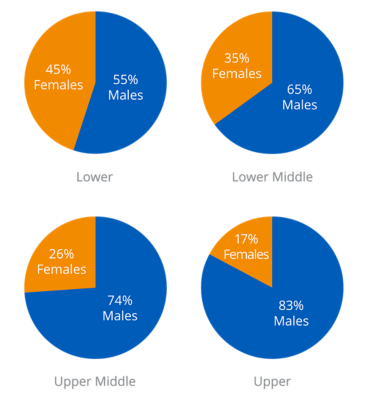
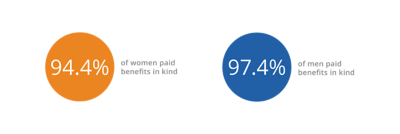
Our 2023 Ireland gender pay gap results
The market in Ireland is important to Workday and has provided heavily desired tech talent to support our Product and Technology organisation, our primary business segment in Ireland. These high-tech roles are well paid, but like our competitors in high-tech, are still heavily male dominated. This larger representation of men in our high-tech workforce in Ireland has led to a positive pay gap (males are paid higher on average). While we’re confident we pay fairly and equitably, we acknowledge we can do more to reach a better balanced workforce between men and women, especially in higher paid roles.
Below are the Workday results for the required Ireland pay gap calculations. Please note Workday had no temporary employees and no part-time male employees so we are unable to report a pay gap.



Our 2022 Ireland gender pay gap results
Our results in the 2022-2023 reporting year reflected the fact that there were more men employed by Workday in Ireland and a greater number of men in technical and other higher paid roles. We took steps to improve through our annual pay parity reviews and gender-equal recruitment policies. Please note Workday had no temporary employees and no part-time male employees so we are unable to report a pay gap.
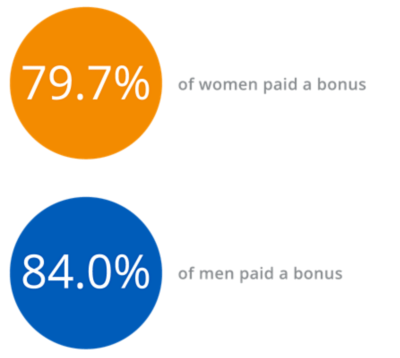
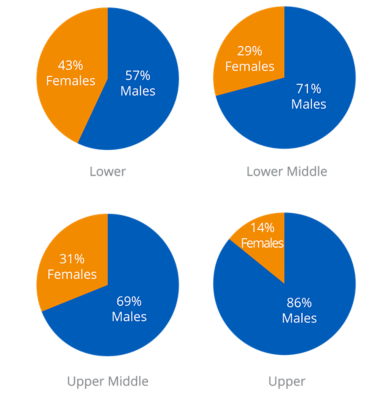

What is Workday Ireland doing to close the gap?
At Workday, our ED&I strategy is to: Value Inclusion, Belonging and Equity (VIBE™) for all.
We believe employee diversity, including different backgrounds, perspectives and skills, fuels innovation. Having different perspectives and experiences come together helps us build a better Workday.
To help us close the gap, we continue to implement a number of initiatives to attract and retain more female employees. These include:
Hiring & Partnerships
Our skills-first people strategy is driving equity in our talent practices and is supported by Workday Skills Cloud using AI technology and innovation fuelled by Workday HCM.
Through our skills-first people strategy and inclusive hiring enablement led by our talent acquisition team, we achieved our biggest hiring year for external female hires, which increased by 6%.
We have also continued investment in diversity partners, including Black Women in Tech, Sistas in Sales, CWIT, Coding Black Females, Black Girls in Tech, APNI, iRelaunch and Women Returners.
Retention & Progression
We offer best-in-class benefits for family planning, midwife services, parental leave, caregiving and bonding and menopause support. This year, we increased career progression and development discussions through a new quarterly check-in process, enterprise-wide promotion philosophy and recognition tools. Using Workday Journeys, we’ve created focused re-onboarding for maternity leave returners and manager guidance on how to support the transition. In FY24, we expanded global self-identification options for more than 90% of our employees, including caregiver status to allow us to better understand the needs of our workforce and continue our momentum to a more equitable workplace. We continue to ensure gender pay equity through annual pay audits and market-based pay structure.
Culture of Belonging
We continue to invest in VIBE™ – our vision for ED&I – to support talent through fair and equitable hiring, development and promotion processes. We use Workday Peakon Employee Voice to collect feedback in real time from our employees, and then turn that feedback into dialogue and action. Over 95% of our employees have taken part in at least one survey since launch. The feedback from these surveys helps us identify actions to take to improve our company and our culture. At Workday, our 13 Employee Belonging Councils play an integral role in fostering a culture of inclusion and belonging for all. Members are not only business and thought leaders, they’re also our culture keepers and storytellers. They strive to promote and advocate for equal opportunity and understanding of diverse communities.
Our biggest opportunity to reduce the gender pay gap continues to be through increasing the representation of women, especially in tech and in more senior-level roles. Although not reflective of pay equity, Workday is fully committed to improving our gender pay gap. Along with many of our peers, we’re focusing on addressing systemic issues from the early stages of representation in STEM education right through to attracting, progressing and retaining more women to the most senior levels in tech.
You can learn more about our commitment to diversity and inclusion can be found in our Global Impact Report or on our blog.
Definitions
Benefits in kind: A benefit in kind is any non-cash benefit of monetary value offered to employees such as gift cards, relocation costs, fitness reimbursements and health benefits.
Bonus pay: Includes one-time bonus payments, performance bonus, commissions, stock and other one-time payments.
Gender pay gap: The difference on average across a population between men’s and women’s pay.
Hourly pay: Includes base pay, allowances, leave and bonus pay.
Mean hourly pay gap: The difference between the mean hourly remuneration of relevant employees of the male gender and that of relevant employees of the female gender expressed as a percentage of the mean hourly remuneration of relevant employees of the male gender.
Median hourly pay gap: The difference between the median hourly remuneration of relevant employees of the male gender and that of relevant employees of the female gender expressed as a percentage of the median hourly remuneration of relevant employees of the male gender.
Mean bonus pay gap: The difference between the mean bonus remuneration of relevant employees of the male gender and that of relevant employees of the female gender, expressed as a percentage of the mean bonus remuneration of relevant employees of the male gender.
Median bonus pay gap: The difference between the median bonus remuneration of relevant employees of the male gender and that of relevant employees of the female gender, expressed as a percentage of the median bonus remuneration of relevant employees of the male gender.
Proportion of those paid a bonus: The percentage of all employees of the male gender who were paid bonus remuneration and the percentage of all employees of the female gender who were paid such remuneration.
Proportion of those paid benefits in kind: The percentage of all employees of the male gender who received benefits in kind and the percentage of all employees of the female gender who received such benefits.